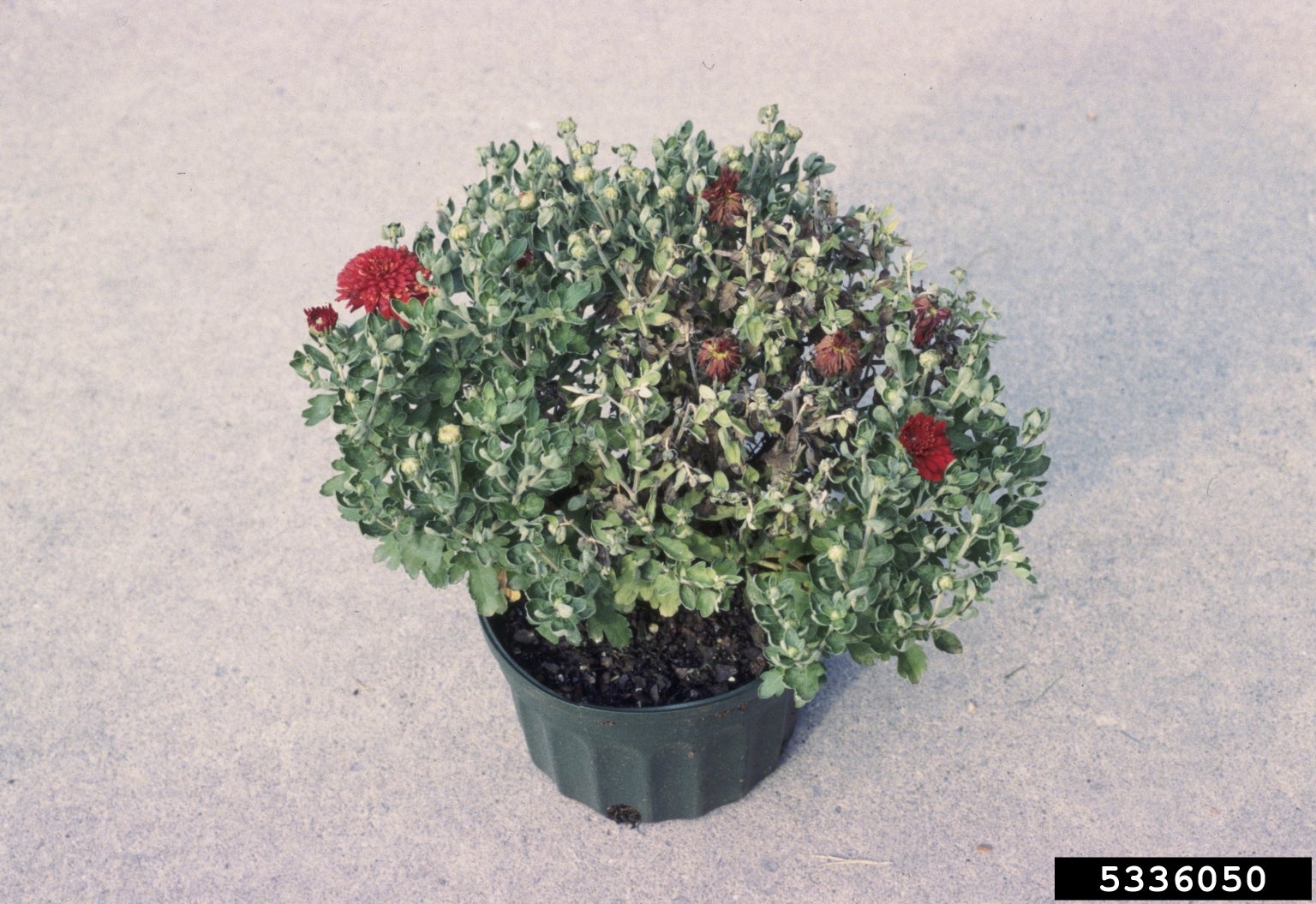Leaf Spot On Mums – Treating Chrysanthemum Bacterial Leaf Spot

When it comes to easy growing and general disease resistance, few plants can compare to the chrysanthemum. Lighting up the autumn landscape with myriad colors and forms, mums are a welcome addition to any outdoor space, whether in pots or planted in the garden. Unfortunately, the mighty mum has an Achilles heel: chrysanthemum leaf spot disease.
How to Avoid Leaf Spot on Chrysanthemum
Leaf spot of chrysanthemum is caused by the bacteria Pseudomonas cichorii, which is sometimes carried on the leaves of the plant, so even healthy looking specimens may be susceptible when conditions are right. For this reason, it is important to provide the proper growing conditions and use the appropriate watering technique to avoid bacterial leaf spot on mums.
Bacteria thrives in warm, moist environments, so when planting mums, always use adequate spacing between plants to ensure good air circulation. Water plants at ground level rather than from above to avoid moisture sitting on the leaves. Lastly, avoid over-feeding, which seems to encourage leaf spot of chrysanthemum.
Identifying Chrysanthemum Leaf Spot Disease
The home gardener’s first line of defense is knowing what to look for. Characteristics of the disease are dark brown to black, irregular spots on leaves that will dry to a lighter color and crack.
They will usually start at the base of plants, travelling up to cause leaf curl and blight in both buds and flowers. When spots are dark (when they are damp), the bacteria are active, so avoid handling wet plants or splashing water from infected plants onto healthy ones.
Mum Leaf Spot Control
The use of a copper hydroxide spray may be beneficial in treating chrysanthemum bacterial leaf spot, as bacterial sprays have been found to be ineffective. Make sure to apply the spray as soon as symptoms occur and in a way that achieves full coverage of the plant. Badly infected plants should be removed and destroyed.
There are some chrysanthemum cultivars that are more resistant than others, so speaking with a local gardening expert or county extension agent about the best mums to grow in your area may be an option to avoid planting highly susceptible varieties.
Gardening tips, videos, info and more delivered right to your inbox!
Sign up for the Gardening Know How newsletter today and receive a free copy of our e-book "How to Grow Delicious Tomatoes".
-
 Create A Romantic Garden Straight Out Of Bridgerton: Regency Era Romance In Your Garden
Create A Romantic Garden Straight Out Of Bridgerton: Regency Era Romance In Your GardenTry some romantic garden ideas straight out of Bridgerton. Flowers and gardens in the Regency era were lush and charming and you can get the same look!
By Bonnie L. Grant
-
 Moody Blooms For Spring: 8 Types Of Black Flowers To Add Drama To Spring Displays
Moody Blooms For Spring: 8 Types Of Black Flowers To Add Drama To Spring DisplaysFrom midnight burgundies to inky violets, several types of black flowers can enrich and embolden a spring display. Try these brooding bloomers for a moody garden
By Tonya Barnett